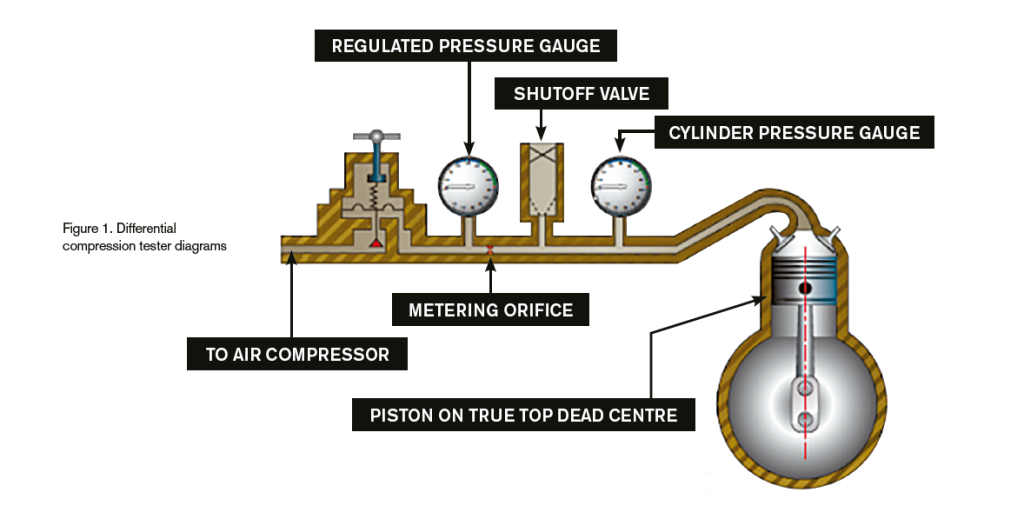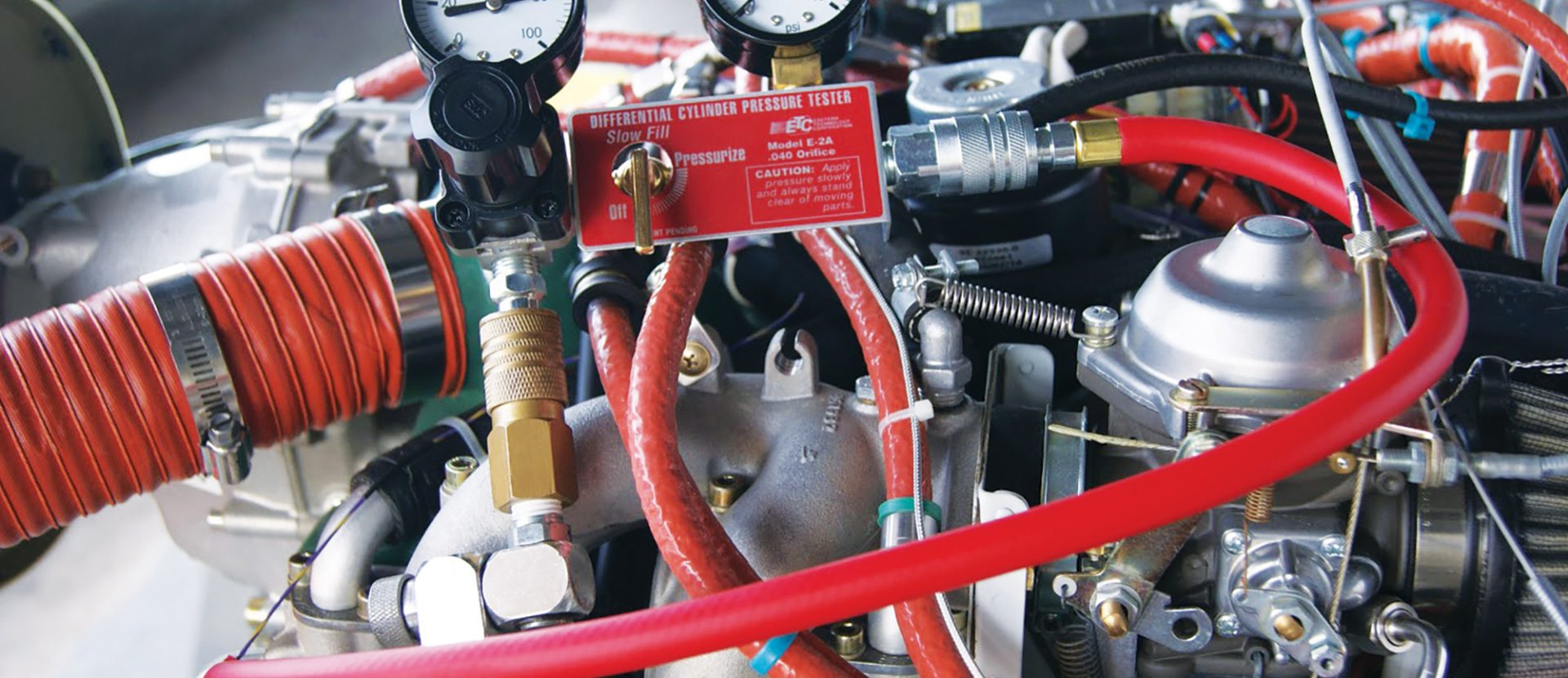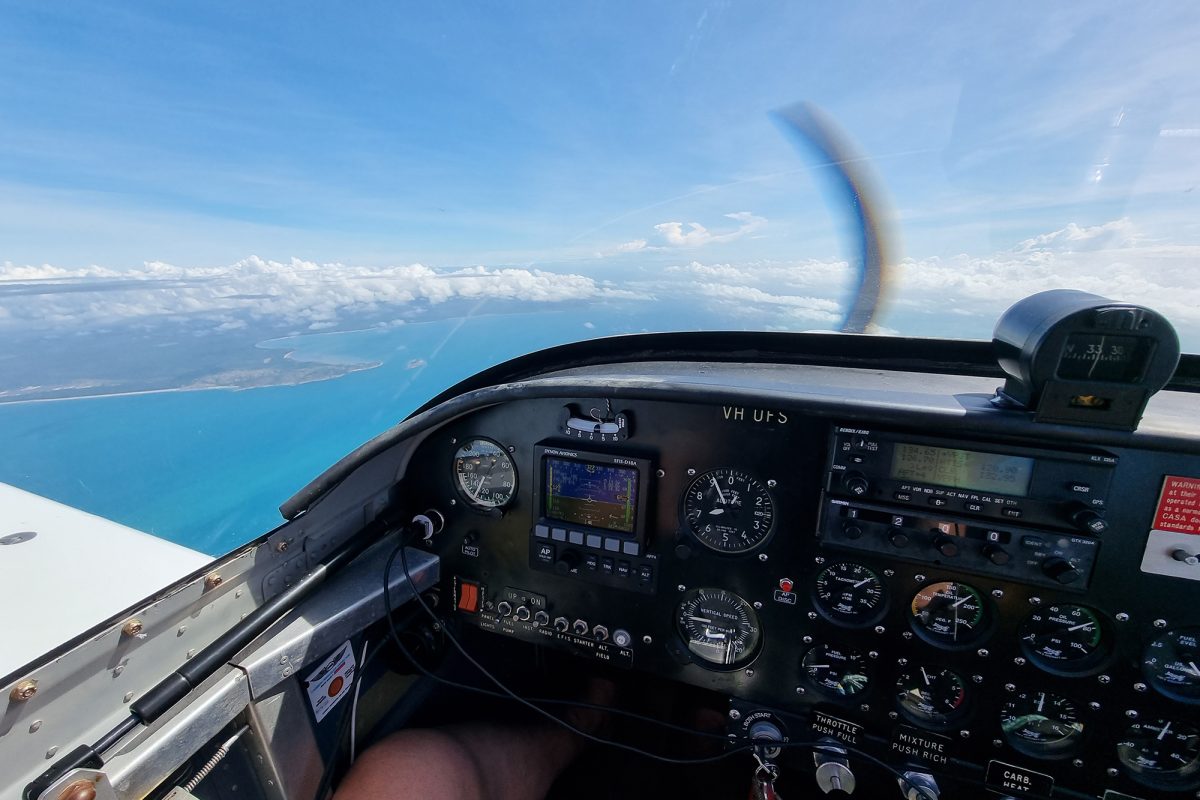PISTON ENGINE AIRWORTHINESS REQUIREMENTS
Tracking engine performance over time is vitally important for aircraft owners. Regular testing ensures the ongoing safety of your flying, and early detection of issues can save you money on costly repairs. Let’s take a look at what’s involved in compression testing and passing RAAus’ Piston Engine Airworthiness Requirements.
Detecting low compression early can save you thousands on a complete engine replacement. It’s a simple process that determines if the valves, piston rings within the cylinder head, and pistons are adequately sealing the combustion chamber. If pressure leakage is excessive, the cylinder cannot deliver full power.
Best practice is to perform a compression test as soon as the engine is shut down and warm, so the parts are freshly lubricated. Be sure the ignition switch is in the ‘off’ position, remove necessary cowling and the most accessible spark plug from each cylinder. When removing spark plugs, identify them to coincide with the cylinder. Close examination of plugs aids in diagnosing problems within the cylinder. Review maintenance records of the engine being tested. Records of previous compression checks help in determining progressive wear and in establishing the necessary maintenance actions.

DIFFERENTIAL PRESSURE TESTER
The differential pressure tester checks the compression of aircraft engines by measuring leakage through the cylinders. It’s capable of detecting minute valve leakages, allowing the replacement of cylinders where valve burning is starting.
If low compression is found on any cylinder, turn the engine through with the starter, or restart and run the engine to take-off power before rechecking.
Cylinders with compression below the specified minimum should be further checked to determine whether leakage is past the exhaust valve, intake valve, or piston. After valve blow-by, the most frequent cause of low compression is excessive leakage past the piston.
CYLINDER REPLACEMENT
Engine cylinders are designed to operate for a specified time before normal wear requires an overhaul. If the engine is operated correctly and properly maintained, cylinders normally last until the engine has reached its Time Before Overhaul (TBO). Incorrect operation of the engine, or poor maintenance, can exacerbate wear and lead to premature cylinder replacement.
Cylinders are always replaced as a complete assembly, including the piston, rings, valves, and valve springs. Order the cylinder assembly under the part number specified in the engine parts catalogue. Parts, such as valve springs, rocker arms and rocker-box covers may be replaced individually.
Normally, all the cylinders in an engine are of the same type. The size of the cylinder is indicated by a colour code around the barrel. In some instances, air-cooled engines are equipped with chrome-plated cylinders. These are usually identified by a paint band around the barrel, usually in international orange.
When installing a cylinder, the assembly will include the correct piston rings, however if a piston ring is broken during installation, check the cylinder marking to determine the correct ring for replacement.
Correct procedure and care are important when replacing cylinders. Careless work or using incorrect tools can damage the replacement cylinder or its parts. At the end of the day, you want to get the most out of your engine. Committing to proper care and maintenance throughout your engine’s lifetime will keep you in the sky for longer, with a heavier wallet too.
RAAus members should always consult the engine manufacturer’s approved maintenance manual prior to any maintenance. This article is for broad reference and guidance only.









